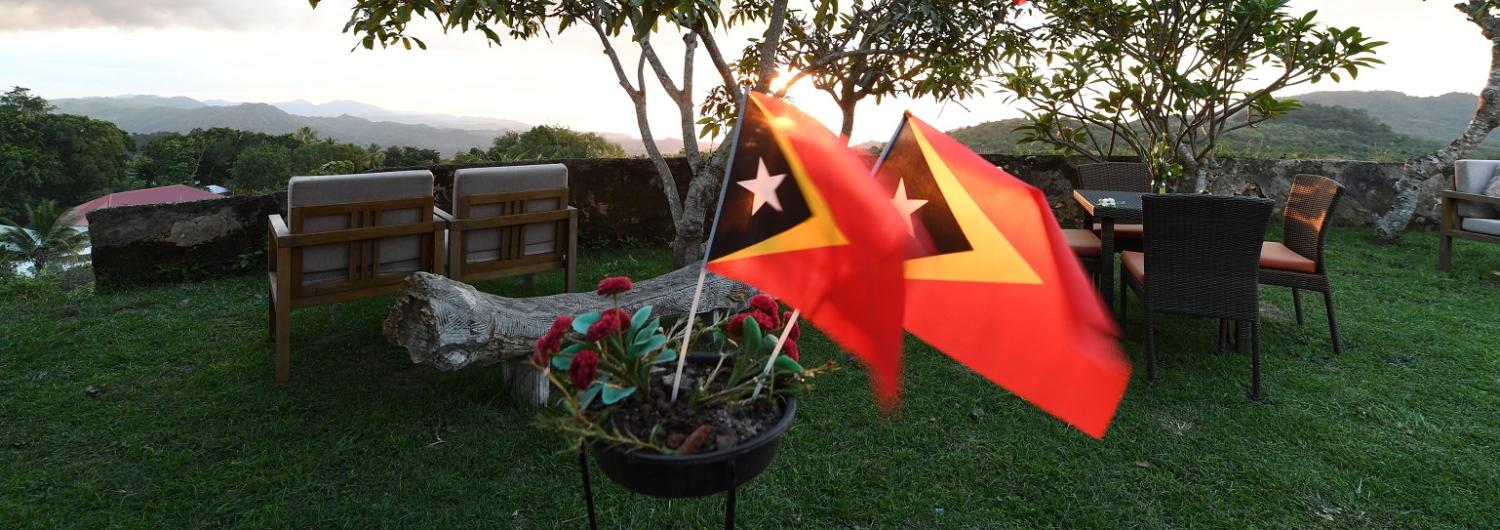On Monday, a joint statement from the governments of Timor-Leste and Australia announced that Timor-Leste planned to officially notify Australia that it wished to terminate the 2006 Treaty on Certain Maritime Arrangements in the Timor Sea (CMATS).
The CMATS provided for its own cancellation if, after six years, the governments and venture partners could not agree on Sunrise development.
Australia was an adamant supporter of retaining the treaty. However, the carefully worded statement indicates that the Australian government ‘recognises’ Timor-Leste’s right to initiate the termination.
Terminating CMATS
CMATS was originally designed to enable the joint development of the contested Greater Sunrise gas field, estimated to be worth around $40 billion. The states negotiated a 50:50 revenue sharing arrangement, and the treaty placed a 50-year moratorium on the negotiation permanent maritime boundaries.
Timor-Leste was dissatisfied with CMATS because Australia did not agree with its plan to build an export pipeline to its south coast for processing.
Australia supported the view of licensee consortium, headed by Woodside, that held the export pipeline is not the best commercial option.
Timor-Leste’s government has also sought permanent maritime boundaries, arguing these are a necessary precursor to full sovereignty.
In 2015, Timor-Leste initiated United Nations Compulsory Conciliation (UNCC) proceedings under the United Nations Convention on the Law of the Sea (UNCLOS) to assist in resolving this maritime boundary dispute.
Timor-Leste initially preferred to use legal processes to invalidate the treaty because a unilateral withdrawal would have threatened the termination of the 2002 Timor Sea Treaty under Article 3 of CMATS and thrown oil revenue from the Joint Petroleum Development Area (JPDA) in doubt.
In 2013, Timor-Leste initiated proceedings against Australia to invalidate CMATS on the grounds that it was not negotiated in good faith due to Australia’s alleged spying on Timor-Leste’s representatives in 2004.
However, the possibility of Timor-Leste withdrawing from CMATS was raised in opening statements to the UNCC. Timor-Leste government spokesperson Agio Periera declared that ‘[t]he current provisional regime is near its end. CMATS is going. That is the policy of Timor-Leste. Timor-Leste’s legal representative declared that if necessary Timor-Leste would exercise its right to terminate the CMATS unilaterally’.
A win for Timor-Leste?
Until recently, Australia refused to re-enter boundary negotiations, stating its preference for maintaining existing treaty arrangements.
Timor-Leste’s decision to initiate the UNCC, and its threats to unilaterally withdraw from CMATS, have effectively forced Australia to back down on maritime boundaries discussions.
Without CMATS, the Australian government can no longer rely upon the treaty to prevent discussions on maritime boundaries. This could also have broader ramifications for Australia’s foreign policy, in particular its position that parties to the South China Sea should respect the international 'rules-based order'. While CMATS was in place, Australia could counter charges of hypocrisy by arguing that its respect for the legally binding treaty was consistent with the rules-based order.
Negotiating Boundaries
While Timor-Leste has successfully forced Australia to enter negotiations on permanent boundaries, this may turn out to be a pyrrhic victory.
Timor-Leste’s aim is to force Australia to negotiate a permanent boundary, but its core objective is achieving boundaries that would make its oil industrialisation ambitions viable. This requires obtaining most, if not all, of Greater Sunrise.
Australia has no obligation to reach an agreement. It has repeatedly emphasised the non-binding nature of the UNCC recommendations. Australia has also given no indication that it has changed its position on where maritime boundaries should be drawn.
Australia favours principles of ‘natural prolongation’, which provides it seabed territory that extends to the edge of a geomorphic continental shelf. In contrast, Timor-Leste favours a ‘median’ line, which is supported by post-UNCLOS jurisprudence. But the contested line that determines Greater Sunrise ownership is the eastern lateral. Australia’s claim to 80% of the field is based on the current interim line drawn according to principles of ‘simple equidistance’. Timor-Leste argues that the eastern lateral should be drawn further to the east. Problematically, UNCLOS provides few substantive rules for settlement of the eastern lateral beyond the need to find an ‘equitable solution’.
In recent years, revenues from the Joint Petroleum Development Area have provided approximately 90% of Timor-Leste’s state budget. The Bayu-Undan oil field will stop producing in the early 2020s. Timor Leste's $16 billion sovereign wealth petroleum fund could be depleted by 2025. Without a source of revenue, Timor-Leste’s economy would be at serious risk of collapse. The more time that passes, the more urgent a resolution on Greater Sunrise becomes.
Timor-Leste’s dependence upon Timor Sea resources renders its vulnerable in terms of futures negotiations. Australia could potentially prolong boundary negotiations in an effort to pressure Timor-Leste to accept a less favourable outcome.
Australia’s exclusion of binding compulsory dispute resolution procedures mean that Timor-Leste cannot take Australia to an international court for a ruling on the maritime boundary. Permanent maritime boundaries negotiations have failed in the past because neither state fully recognises the territorial claims of the other.
There is no precedent for what happens if the states fail to reach an agreement after the UNCC recommendations. UNCLOS suggests that if the negotiations fail, the parties ‘by mutual consent’ would submit to third-party arbitration to decide boundaries. However, Australia cannot be forced to accept the jurisdiction of a court or tribunal on maritime boundaries.
It is also questionable whether a tribunal could rule to extend the eastern lateral without Indonesia. Indonesia would need to be involved, at minimum, in determining the trilateral junction points. Indonesia becoming a potential third claimant is not a favourable prospect for either Timor-Leste or Australia.
Ultimately, it appears that the best chance of settling this dispute is through negotiation, which will require both sides to compromise on their boundary claims.
